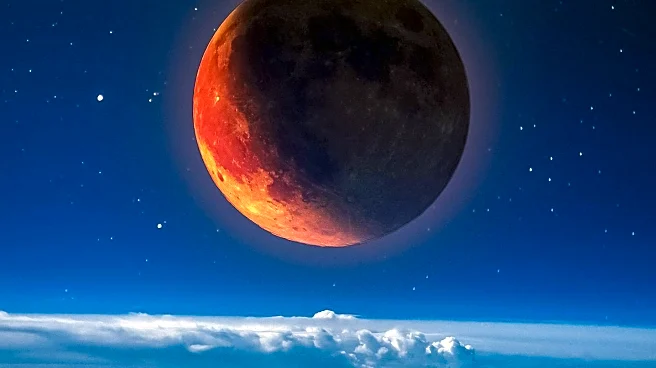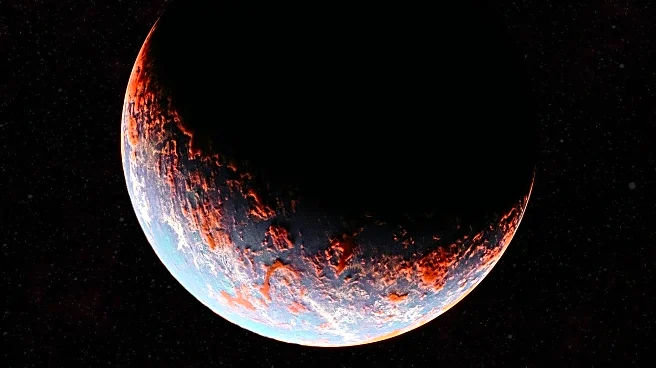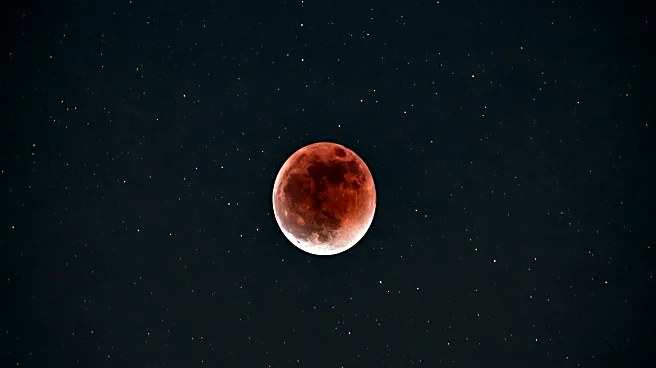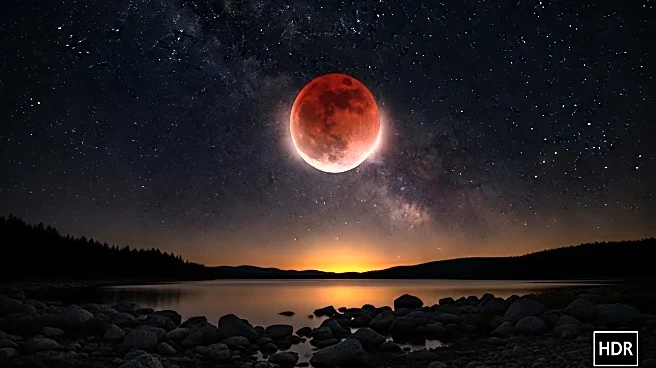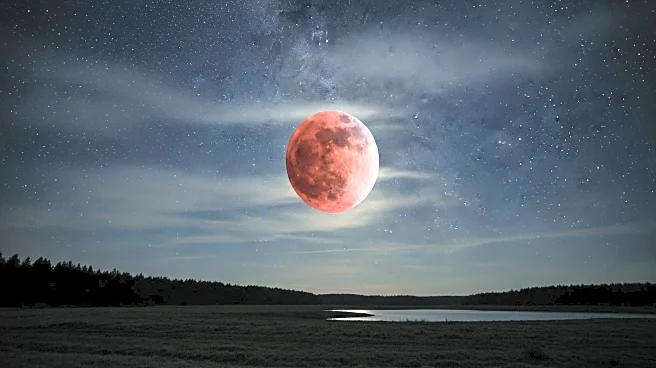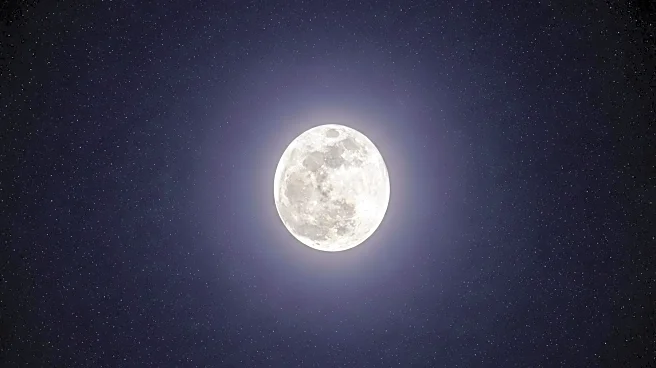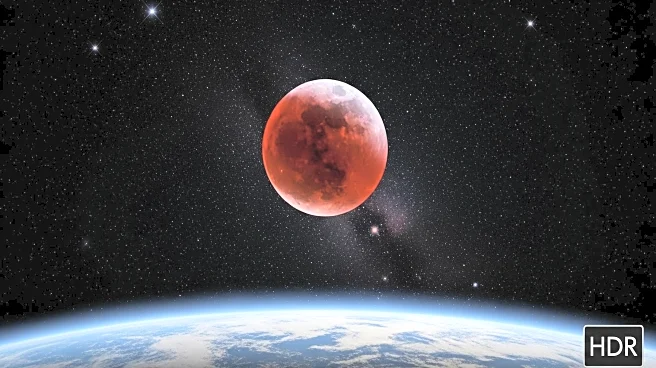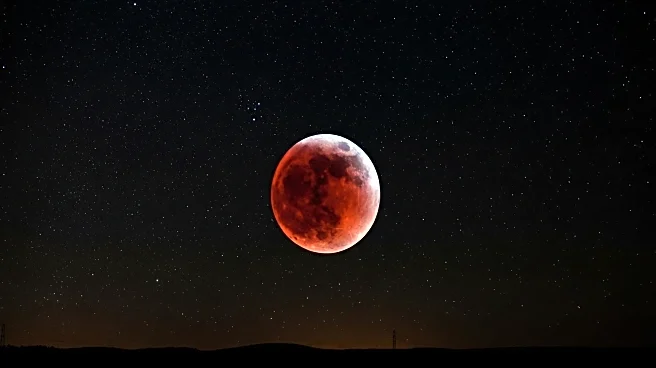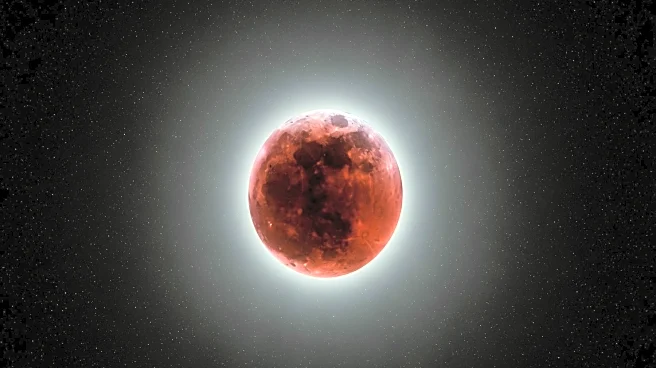What's Happening?
A total lunar eclipse is scheduled to occur overnight on September 7-8, 2025, visible across Europe, Africa, eastern Australia, and New Zealand. During this event, the moon will pass through Earth's umbra, resulting in a 'blood moon' where the lunar surface appears red due to the scattering of sunlight through Earth's atmosphere. This eclipse is the second total lunar eclipse of the year, offering a spectacular view for skywatchers in the Eastern Hemisphere. The eclipse will last for 66 minutes, providing ample time for observers to witness the transformation.
Why It's Important?
Total lunar eclipses, particularly those resulting in a 'blood moon,' are significant for both scientific study and public engagement. They offer insights into Earth's atmospheric conditions and the dynamics of celestial bodies. For the public, such events are visually striking and can inspire interest in astronomy and science. The widespread visibility of this eclipse across multiple continents highlights the global nature of astronomical phenomena, fostering a sense of shared experience among diverse populations.
What's Next?
Following this eclipse, the next total lunar eclipse will occur in March 2025, visible primarily from North America and South America. Observers in these regions will have the opportunity to experience another 'blood moon' event. Astronomers and educators may use these events to promote scientific literacy and public interest in space exploration. Additionally, advancements in technology and media allow for live streaming of such events, making them accessible to a global audience.
